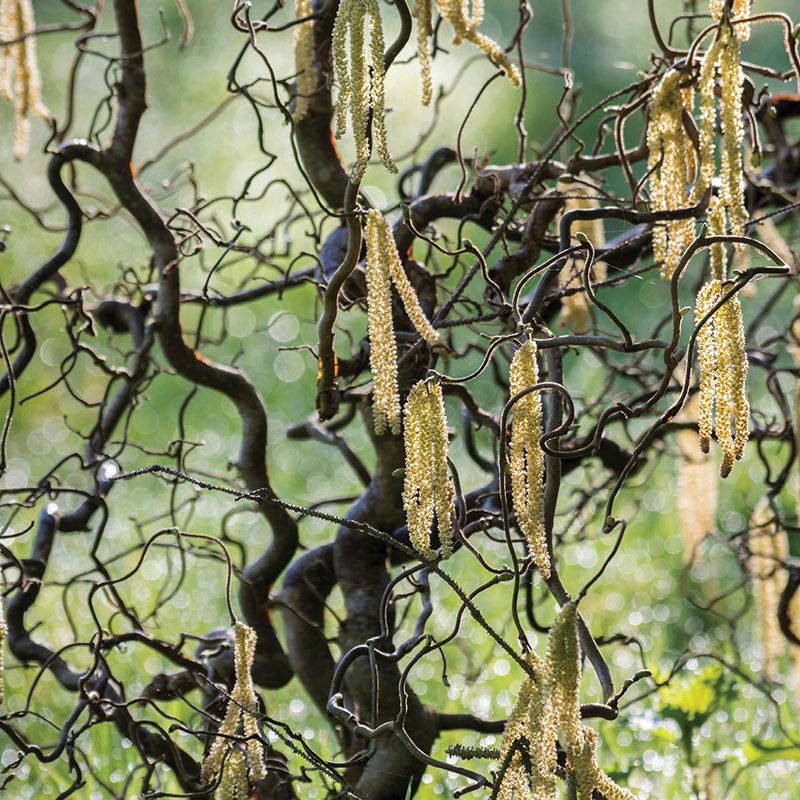The contorted branches of Harry Lauder’s walking stick lend winter intrigue

Yellow catkins stretch from the gnarled branches of Harry Lauder’s walking stick.
After dropping its broad leaves each autumn, Harry Lauder’s walking stick steps into the spotlight. The shrub’s gnarled branches twist this way and that, reaching some 10 feet tall and snagging the attention of passers-by who didn’t offer a second glance all summer. “Suddenly, everyone wants to know how to get one,” says Hyams Garden & Accent Store horticulturist John Millman.
A contorted variety of the European filbert tree, Harry Lauder’s walking stick is named for a Scottish vaudevillian performer who entertained early-20th-century audiences with theatrics that featured his cane, devised from a spiraling filbert branch.
And just as Lauder commanded a starring role, so should this shrub. “Treat it as a specimen plant,” advises Millman, who explains that walking stick’s arresting structure is amplified in late winter, when catkins appear, stretching two or three inches long and turning golden-yellow on the bare branches.
“If you have a slight hill in your landscape, take advantage of that to elevate the presentation,” suggests Millman. He also recommends container-growing. “Paired with a pot in an embossed design—or maybe a high-gloss, cobalt blue finish—walking stick can make one area of your yard really pop.”
However, Charleston’s climate is the hottest this slow-grower can handle, so proper placement is key. Make sure the shrub receives direct sun in the morning, with filtered rays the rest of the day. And aim to plant in October or early November so it can get established before the next steamy season.
“Minor trimming, or ‘tipping,’ throughout the year will help the branches grow more contorted,” notes Millman. Save bigger prunes for the winter dormant period, and keep the cuttings; popped in a vase solo or added to floral arrangements (hello, Halloween display), they’ll make an impact indoors, too.
AT A GLANCE - Harry Lauder’s walking stick (Corylus avellana ‘Contorta’)
■ Height: 8-10 feet tall
■ Blooms: Yellow catkins on bare branches beginning in February
■ Foliage: Broad, heart-shaped green leaves
■ Sunlight: Four hours of direct morning sun, with filtered sun the rest of the day
■ Soil: Fertile and well-draining
■ Water needs: Average
■ Pests: Watch for signs of damage from the likes of scale, Japanese beetles, and twig borers and treat as needed.